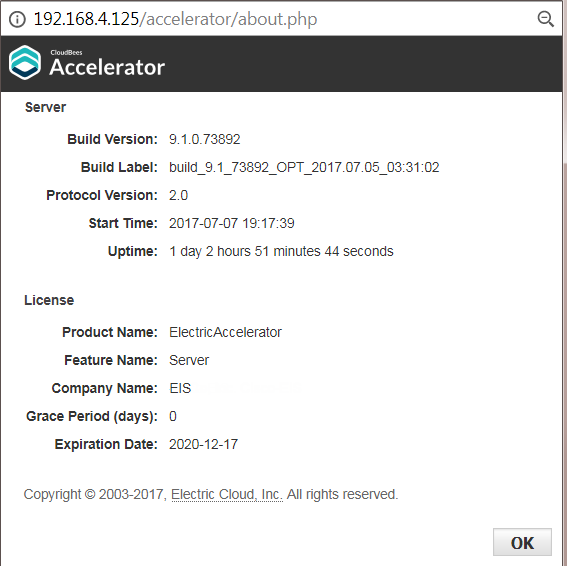The Home page provides a news feed, links to documentation and other assistance, instruction for novice users, and real-time charts for agent usage and build durations during the past 24 hours.
Banner
The banner provides the following links:
-
Logout —Logs out the current user
-
About —Displays information about the Cluster Manager server (such as the product version) and information about the Cluster Manager license (such as the expiration date and the grace period for renewal)

-
Help —Opens page-specific (context-sensitive) HTML help throughout the web UI. The help is loaded from the CloudBees documentation website.
The web UI also provides overview and concept help topics that are not context-sensitive (meaning that they are not linked to a specific page in the web UI). To see these help topics, click Help from any page in the web UI. The left-pane (table of contents) contains the list of help topics.
The banner also provides the following key statistics about the cluster:
-
Agents —Number of agents that are currently running in the cluster.
-
Running builds —Number of builds that are running currently in the cluster.
-
CPU Hours Used —Total hours of CPU time used by all builds on all agent machines in the cluster since it was established.
-
Developer Hours Saved —Total hours of build time saved versus builds without build acceleration since the cluster was established.
-
Days Remaining —Number of days remaining in the Cluster Manager license.
Tabs
The Home page and all other pages in the Cluster Manager web UI provide tab-based access to administration functions as well as information about builds, agents, reports, and messages.
-
Home — Opens the Home page.
-
Builds —Opens the Builds page, which displays running and completed builds, additional build information, and whether completed builds succeeded or failed. For details, see xref:builds.adoc[Builds].
-
Agents —Opens the Agents page, which lets you view details about each agent in the cluster, such as the agent host machine, agent software version, and agent status (such as whether it is running, has a problem, or if it failed). For details, see xref:agents.adoc[Agents].
-
Reports —Opens the Reports page, which provide many types of analytics about your build cluster and use several types of data visualization, such as scatter plots and pie charts. For details, see xref:reports.adoc[Reports].
-
Messages —Opens the Messages page, which displays messages from the Cluster Manager, agents, and eMake. For details, see xref:messages.adoc[Messages].
-
Cloud —Opens the Cloud page, which stores cloud platform credentials, cloud burst resource status, and messages related to cloud platforms. For details, see the Cloud section.
-
Administration —Opens the User Settings page, which lets you view and edit the details about the current logged-in user (such as full name, email address, and assigned groups). For details, see xref:user-settings-view-edit.adoc[User Settings].
Online Resources
This section provides online resources for documentation and other forms of assistance such as the Accelerator Knowledge Base.
Lightning Lessons
This section provides a quick start guide and instructional videos for beginning users.
Agent Usage (last 24 hours) Report
This report is a stacked area chart that shows the agent license count and agents available versus agent demand in a specified time period. For details, see Agent Usage Report.
Build Duration Report
This report is a scatter plot that shows the durations of builds over a specified time period. For details, see Build Duration Report.